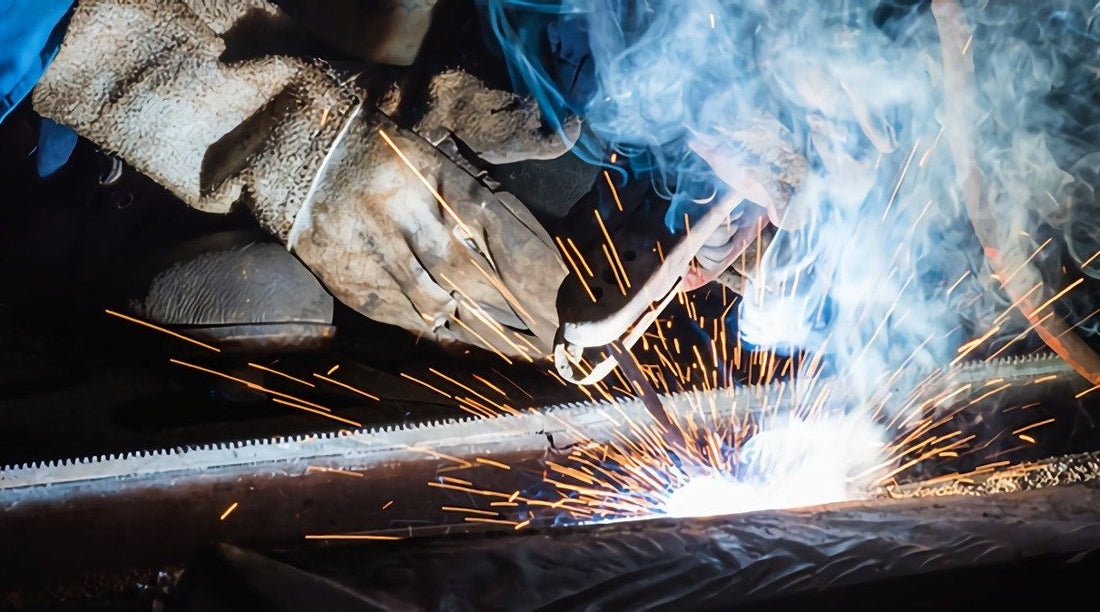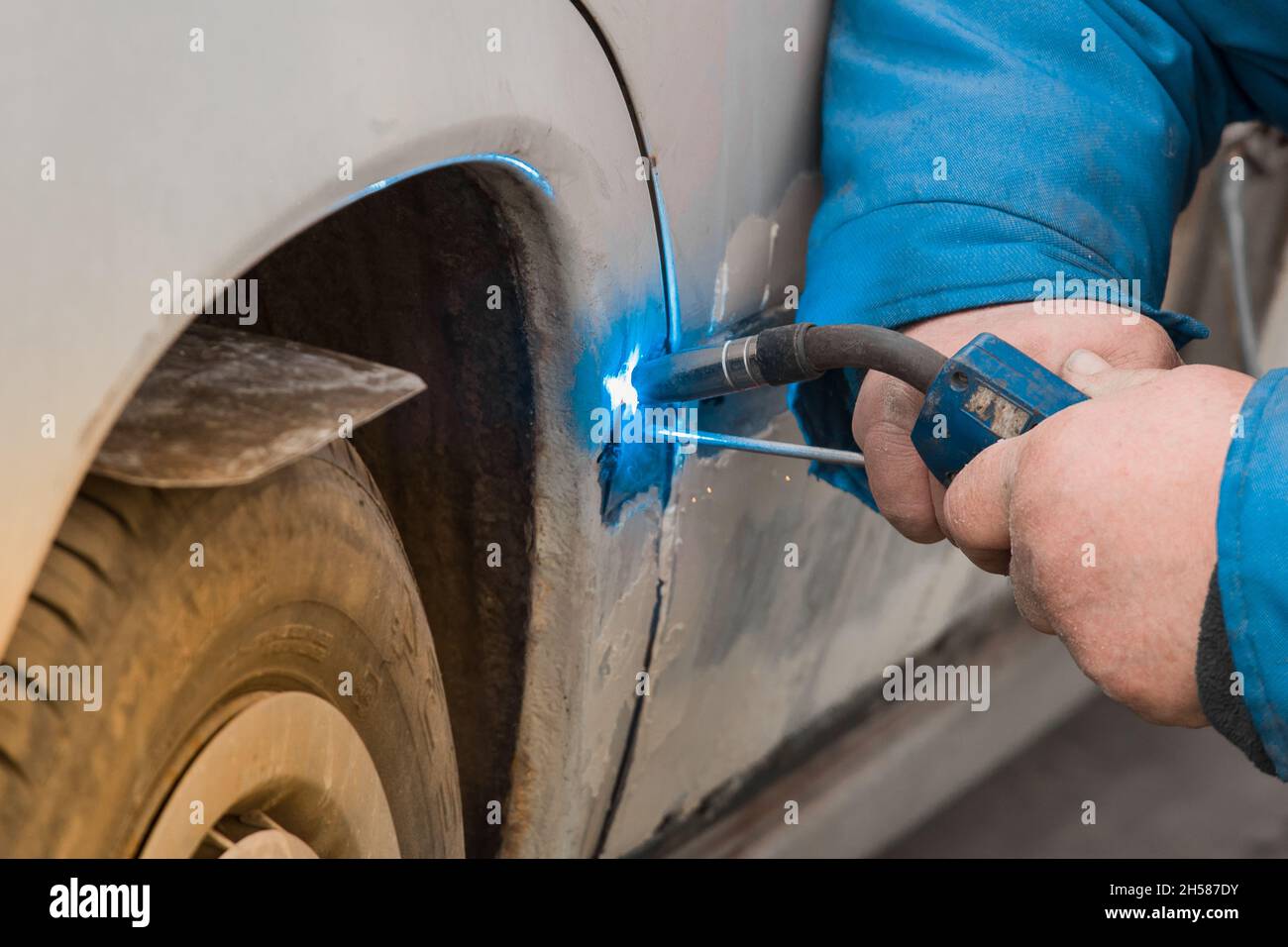Everything about Welding: Trick Insights Into Techniques and Best Practices for Success
Welding encompasses a selection of techniques, each fit for particular materials and applications. Comprehending these methods, such as GMAW, SMAW, and TIG, is crucial for achieving optimal results. Furthermore, the best tools and safety techniques can not be forgotten. As preparation and repairing play essential roles in the welding process, grasping these elements can significantly boost the top quality of the last item. What are the vital elements that assure an effective weld?
Understanding Different Welding Methods
Welding strategies incorporate a selection of techniques, each suited to particular applications and materials. Among the most usual methods are Gas Metal Arc Welding (GMAW), Shielded Metal Arc Welding (SMAW), and Tungsten Inert Gas Welding (TIG) GMAW, also referred to as MIG welding, is prominent for its rate and convenience, making it perfect for thin materials. SMAW, or stick welding, is favored for its simplicity and effectiveness in outside environments, particularly with thicker steels. TIG welding provides precision and control, making it suitable for elaborate job and non-ferrous metals (Montana Mobile Welding and Repair Fabrication). Each technique has its special benefits and considerations, permitting welders to select the best method based upon the job's requirements, material kind, and preferred results. Recognizing these techniques is important for effective welding
Crucial Welding Tools and Devices
While numerous welding techniques call for details abilities, the right tools and tools are just as necessary for accomplishing high quality results. Crucial welding equipment includes welding devices, which vary depending upon the strategy-- such as MIG, TIG, or stick welding. Protective gear, including aprons, headgears, and gloves, assurances security and convenience during the procedure. Furthermore, clamps and fixtures help protect products in position, ensuring accuracy in welds. Consumables like welding rods, cable, and shielding gas are additionally important elements that affect the top quality of the weld. In addition, devices such as cutters and grinders assist in surface area prep work and post-weld ending up, adding to an expert end result. Purchasing high-quality equipment inevitably boosts the efficiency and efficiency of welding tasks.
Safety And Security Practices in Welding
Appropriate safety and security techniques are necessary in the welding market to safeguard workers from potential hazards. Welders must wear proper personal protective devices (PPE), consisting of helmets with proper shading, gloves, and flame-resistant clothing. Ample air flow is crucial to decrease exposure to unsafe fumes and gases produced during the welding procedure. In addition, workers ought to be educated in the appropriate handling of welding devices to stop accidents. Fire safety procedures, such as maintaining combustible materials away from the welding area and having fire extinguishers easily offered, are essential. Routine examinations of devices and work areas can help determine potential dangers before they bring about mishaps. By sticking to these safety and security methods, welders can produce a much safer working environment and lessen risks related to their profession.
Preparing Products for Welding
Preparing products for welding is a vital step that greatly affects the high quality and honesty of the last item (Montana Mobile Welding and Repair Belgrade Fabrication). Correct prep work includes cleaning up the surfaces to eliminate pollutants such as dirt, corrosion, and oil, which can compromise the weld. Techniques such as grinding, sanding, or using solvents are commonly used to attain a tidy surface. Additionally, guaranteeing that the materials fit together comfortably is crucial; voids can result in weak welds. It's additionally vital to take into account the placement and positioning of the parts, as this will impact the simplicity of welding and the last outcome. Picking the proper filler material and making sure compatibility with the base steels is important for attaining strong, long lasting welds.
Tips for Achieving High-Quality Welds
Attaining top notch welds needs attention to information and adherence to finest methods throughout the welding procedure. Proper joint preparation is vital, making certain surface areas are free and clean from contaminants. Selecting the appropriate filler product and welding strategy based upon the base metals is critical for suitable bonding. Preserving regular travel speed and angle while welding can advertise and stop flaws harmony. Furthermore, managing warmth input is essential; extreme warm can cause bending and compromised joints. If needed, routinely evaluating welding consumables the welds throughout the procedure permits for instant changes. Finally, utilizing proper post-weld therapies, such as cleansing and stress alleviation, can enhance the durability and stability of the weld, ultimately guaranteeing a successful end result.
Repairing Usual Welding Issues
Welding commonly offers difficulties that can impact the high quality and integrity of the final item. Typical concerns such as porosity, irregular weld grains, and getting too hot can emerge, each calling for specific troubleshooting methods. Comprehending these troubles is vital for welders to improve their abilities and attain suitable outcomes.
Porosity Issues Described
Although porosity can commonly be overlooked, it continues to be a critical concern in welding that can jeopardize the honesty of a finished product. Porosity describes the presence of small gas pockets within the weld grain, which can weaken the joint and lead to early failing. This issue typically arises from pollutants, dampness, or improper shielding gas insurance coverage during the welding process. To reduce porosity, welders need to confirm that the base products are tidy and dry, use appropriate protecting gases, and maintain consistent welding parameters. Consistently evaluating the devices and atmosphere can also help recognize potential issues before they manifest in the weld. Dealing with porosity efficiently is important for achieving strong, sturdy welds that fulfill high quality criteria.

Inconsistent Weld Beads
Inconsistent weld beads can significantly affect the top quality and stamina of a finished product. Numerous aspects contribute to this concern, consisting of improper travel speed, inaccurate amperage setups, and inconsistent electrode angles. When the welder relocates as well quickly, a grain may show up narrow and do not have penetration, while moving as well slowly can create extreme build-up. In addition, using the incorrect amperage can result in either damaging or excessive spatter, both of which concession weld stability. The welder's check it out method, such as inconsistent torch motion, can also result in unequal bead appearance. To reduce these problems, welders must concentrate on preserving stable, regulated motions and making sure proper tools setups to achieve uniformity in their welds. Uniformity is crucial to accomplishing reputable and solid welds.
Getting Too Hot and Warping Issues
Excessive warm during the welding procedure can cause considerable overheating and deforming problems, impacting the architectural stability of the workpiece. These problems typically manifest as distortion, which can jeopardize placement and fit-up, making further assembly challenging. Elements contributing to overheating consist of the choice of welding specifications, such as voltage and take a trip rate, along with the sort of product being bonded. To reduce these problems, welders must preserve consistent traveling rate and ideal warm input while monitoring the work surface temperature. Additionally, preheating or post-weld heat treatment can aid ease anxieties caused by rapid air conditioning - Welding. Normal assessment and adherence to ideal techniques are crucial in stopping getting too hot and ensuring the long life and integrity of welded frameworks
Frequently Asked Questions
What Are the Job Opportunities in the Welding Market?
The welding industry supplies varied occupation opportunities, consisting of positions as welders, examiners, designers, and instructors. more information Professionals can function in production, building and construction, aerospace, and automotive markets, taking advantage of solid need and affordable salaries in various roles.
How Can I Boost My Welding Rate Without Sacrificing Quality?
To boost welding speed without giving up quality, one must exercise effective techniques, preserve tools, enhance setups, and improve hand-eye control. Regular training and seeking comments can additionally considerably add to accomplishing faster, premium welds.
What Qualifications Are Offered for Welders?
Numerous qualifications exist for welders, including those from the American Welding Society (AWS), the National Center for Construction Education and Study (NCCER), and various industry-specific organizations. These qualifications improve employability and demonstrate ability effectiveness.
Just How Does Welding Influence the Residences of Metals?
Welding influences the residential properties of steels by changing their microstructure, which can lead to changes in toughness, solidity, and ductility. Heat input and cooling prices throughout the process considerably impact these product characteristics.
Can I Weld Dissimilar Metals Together?

Comments on “Have you seen signs of incomplete fusion? Montana Mobile Welding and Repair explains how to detect them”